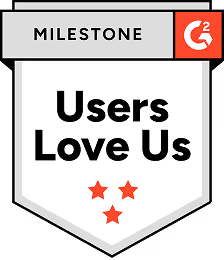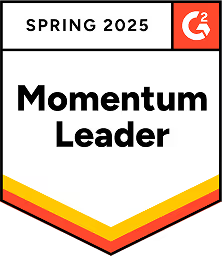How to Build a Complete Buyer Persona (what matters most)

There’s an old saying that goes something like this: “Show me whom a person is friends with, and I’ll show you who that person is.” In other words, you can learn a lot about someone by examining the people they hang out with.
In the context of sales, we could rephrase that quote this way: “Show me whom a company sells to, and I’ll show you who the company is.” The fact is, the identity of almost any brand is inseparable from the people who buy from it. If you want to learn what a company is all about, look at their fans. If you want to find out what makes a powerhouse brand successful, look at how they market to their customers.
The problem is, some companies are in the middle of an “identity crisis.” They don’t really know who their main customers are — and because of that, they can’t fully understand themselves. This is where buyer personas come into the picture. With an accurate, well-developed buyer person in hand, company leaders are not only able to focus their prospecting efforts on the right audience — they’re also able to clearly identify the value their company brings to the table.
Let’s talk about what a buyer persona is, the kind of information you’ll need to develop one, and how you can build one from the ground up.
What Exactly Is a Buyer Persona?
A buyer persona is a fictional profile of your ideal customer (that is, someone who represents your target audience). The buyer persona may be fictional, but it is totally based in reality.
Think of it like the dating scene. Let’s say you have 10 items on your checklist for your “perfect match.” If you meet someone who only checks four of those boxes, then you know it’s time to move on. If someone checks seven or eight boxes… well, you may have to do some soul-searching before deciding whether to pursue that relationship or not. But when you meet someone who checks all 10 of those boxes — wow! You know you’ve found a winner.
Your buyer persona is kind of the same thing. Basically, you’re making a “checklist” of all the characteristics and attributes that your “perfect customer” would have. Once you’ve completed that checklist, you’ll know to avoid consumers that only check a few of those “boxes.” (Not that you’ll refuse to sell to them — but you won’t invest your prospecting efforts in targeting them, specifically.) The more “boxes” from your profile that a consumer checks, the more you should invest in advertising to him/her. And if someone checks all of your “boxes” — yes, definitely go after them!
Note: You may want to build more than one buyer persona, since different people may buy your product for different reasons. And you may offer different products, too. For instance, if you sell footwear, then a set of running shoes may appeal to a jogger in his mid-30’s, while a pair of fuzzy slippers may attract a woman in her late 60’s. (You’d need different prospecting for both of them.)
How Can You Build a Complete Buyer Persona?
In order to develop an outstanding buyer persona, you’re going to need some key pieces of information. These include the following items:
- The age range of your target audience
- Their gender
- Their language
- Their cultural background
- Their level of education
- Their disposable income level
- The marketing channels they prefer (TV, OTT, social media, etc.)
- Their decision-making and purchasing habits
- The challenges/pain points they are facing
- Their interests and goals
In order to compile all of this information, you’re going to need to do some serious audience research. Look at past interactions with your customers, and see which ones offered the highest ROI from your prospecting efforts. Talk to your sales team, and get their observations on which buyers to target. And don’t shy away from looking at the competition — you can use tools like BuzzSumo to search for top shared content across social platforms, including customer engagement data.
Once you’ve done the preliminary research, and the data is in, follow these 4 steps to build an exceptional buyer persona:
1. Identify Pain Points
Basically, you want to answer this question: What problems are my potential customers trying to fix?
There are a ton of ways to find out which challenges are particularly annoying to your prospects. For instance, you can engage in some “social listening” on popular networks like Facebook or Twitter. Keep an eye out for forum threads or comments that indicate a common problem or “pain point” for your consumer base.
Also, keep in touch with your customer service team. Get their feedback on what your existing customers love about your brand… and what they’re not so fond of. You could even ask your reps to gather some quotes from real customers, just to flesh out your buyer persona moving forward.
2. Define Customer Goals
This is the exact opposite of identifying pain points. Now you’re exploring the goals that your potential customers want to achieve (e.g., the benefits they want to receive from your product or service).
Of course, there’s a massive variety in terms of customer goals. Some are personal, while others are professional. Some are short-term, while others are long-lasting. Think of two different customers in the market for a new car: Person A wants to enhance his professional image by driving a luxury sedan, whereas Person B just wants to get to work without breaking down on the side of the road. Same general market; very different goals.
Granted, you won’t be able to match every customer goal with a feature of your product or service — and you don’t have to! Identifying customer goals, along with their pain points, is more about getting inside your ideal customer’s head than anything else. Once you know what makes them tick, you’ll know the best way to appeal to them through your prospecting materials.
3. Understand Your Company’s USP
Your USP (or “unique selling proposition“) is what sets your company, product, or service apart from the competition. It’s all about the value that you (and only you) can bring to your customers.
When you think about your brand’s USP, it’s important not to think in terms of features (in other words, what your product does). Rather, you need to think in terms of benefits (how your product can make your customer’s life better).
Here’s a simple example: Imagine that you’re a smartphone manufacturer, and your newest model comes with the best hi-res camera on the market. That’s a great feature to offer — but what benefits are associated with that feature? For instance: will the feature help your customers to clearly relive captured memories? Once you’ve identified the key benefits that your product or service can offer, then you’ll be able to clearly define your USP, and incorporate that into your buyer persona.
4. Finalize Your Buyer Persona
Now that you’ve compiled all of your audience research, you’ve analyzed your prospects’ pain points and goals, and you’ve settled on your company’s USP, it’s time to crystallize your findings into a single buyer persona.
As you build your persona, remember to make it as realistic and relatable as possible. Granted, it is a fictional profile — but it should be “real” enough that you can easily envision talking to an actual customer that checks all of the boxes from that profile. After all, a buyer persona is more than just an abstract collection of shared characteristics — it’s a tool that allows you to identify with your target audience on a human level.
Of course, you don’t have to write a full-fledged biography for your “ideal customer.” Try to include about the same amount of information that you’d glean from a short conversation on an airplane. For example, let’s say that your target demographic encompasses 25 to 40-year-old mothers who work in a professional role. You could “flesh out” your buyer persona by naming her “Marketing Melissa,” and giving her these characteristics:
- She is 34 years old
- She has been married for 6 years, and has one child aged 3
- She lives in western Pennsylvania
- She works as a marketing director for a software development company
- She loves to go hiking and camping
- She is concerned about saving money for her child’s college fund
- She is currently renting, but wants to buy a house in the near future
And there you have it: a relatable buyer persona that will not only help you to understand whom you’re selling to, but will also enable you to more clearly define what your company should be, and what unique value it brings to the table.
Of course, there’s a lot more that goes into the creation of a complete buyer persona — more than any one article can cover. But if you develop an accurate, relatable buyer persona for your target audience, then it will help your sales prospecting efforts to align like nothing else can. If you want to get a jump-start on your segmentation today, reach out to james@regie.io. He’ll provide a framework for getting started and he’ll build your first campaign for you.
FAQs
Read more posts
View all BlogsNeed more help?
If you still have questions, make sure to check out our Help Center: there, you'll find all the tips & advice you'll need to get your team up & running with Regie.ai.









